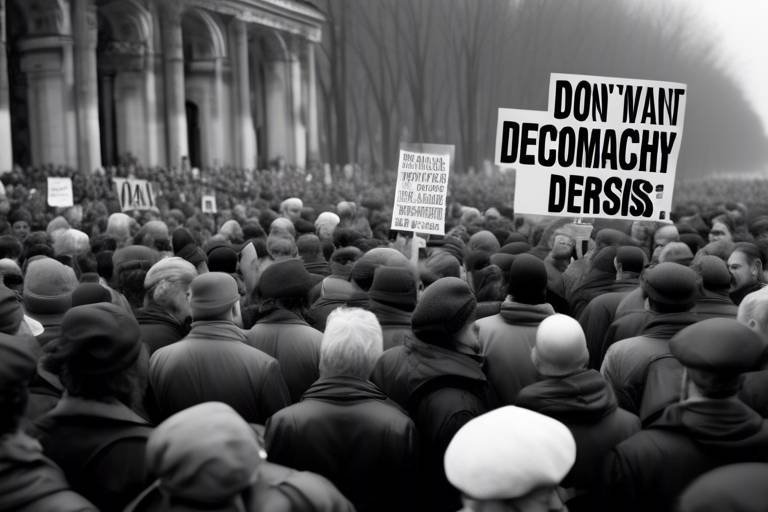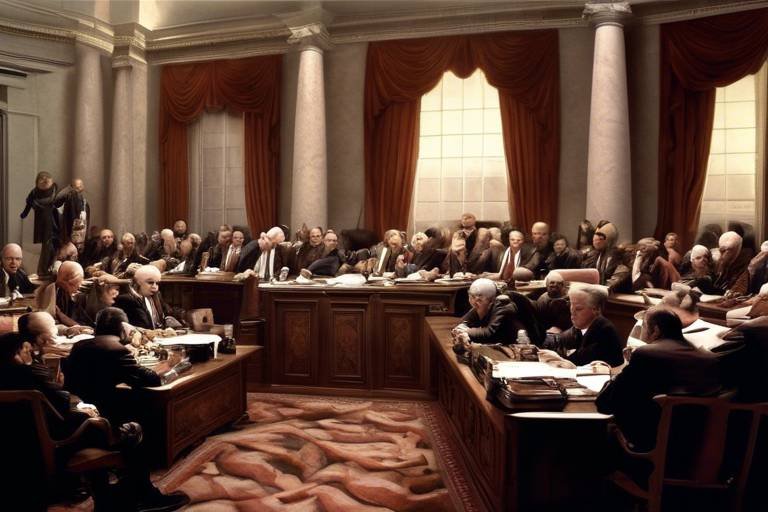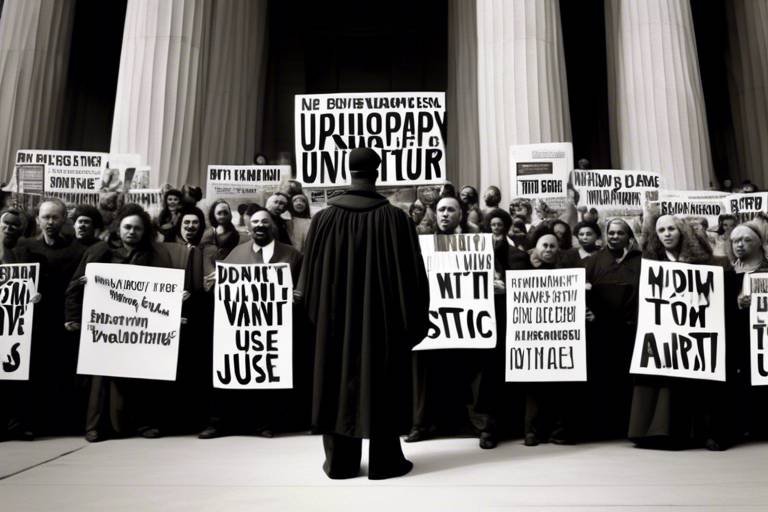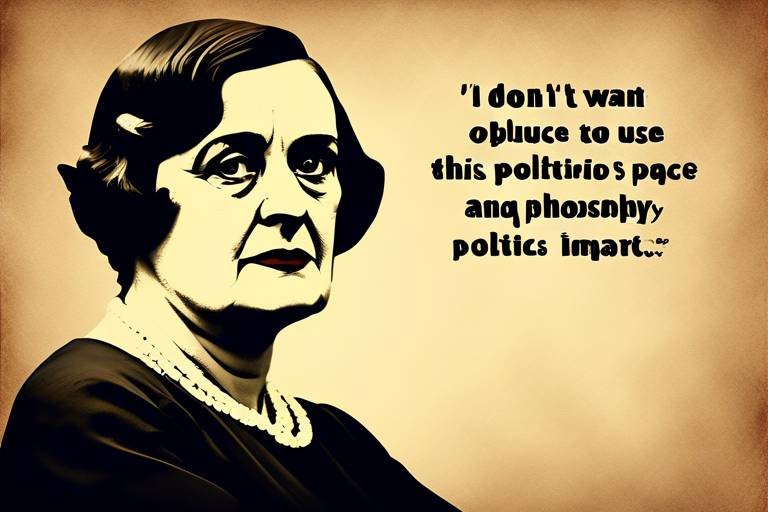Intersectional Politics: Marginalized Voices in Political Philosophy
In today's rapidly changing world, the concept of intersectional politics emerges as a powerful lens through which we can examine the complexities of marginalized voices in political philosophy. It’s not just about one identity; it’s about the interplay of various identities—race, gender, class, sexuality, and more—shaping our experiences and perspectives. This article aims to highlight the significance of intersectionality, exploring how these overlapping identities contribute to unique experiences of oppression and privilege. By diving into key concepts, influential thinkers, and contemporary implications, we can better understand how intersectional politics is not only relevant but essential in contemporary political discourse.
At its core, intersectionality challenges us to recognize that individuals do not experience the world through a single lens of identity. Instead, we wear multiple hats, and each hat can influence how we are treated in society. For instance, a woman of color might face different challenges than a white woman or a man of color. Understanding these nuances is vital for anyone interested in social justice and equitable policy-making. Intersectional politics urges us to listen to these diverse voices, acknowledging their experiences and integrating them into our political frameworks.
Moreover, as we delve deeper into this topic, we will uncover the historical context that has shaped the discourse around marginalized voices. From the suffragette movement to the civil rights movement, various groups have fought for recognition and rights, paving the way for current dialogues on intersectionality. This rich history is not just a backdrop; it informs contemporary movements and helps us understand the ongoing struggles for equality and justice.
In the upcoming sections, we will explore the contributions of key thinkers in intersectional politics, including feminist theorists and critical race scholars. Each of these voices adds a layer of complexity to our understanding of political philosophy, challenging traditional narratives and pushing for a more inclusive approach. As we navigate through these ideas, we’ll also address the contemporary implications of intersectional politics, examining how they influence current political movements, policy-making, and social justice initiatives.
But it's not all smooth sailing. Intersectional politics faces its share of challenges, including misinterpretations and criticisms that can dilute its effectiveness. It’s crucial to address these issues head-on, clarifying the true meaning and scope of intersectionality in political philosophy. By doing so, we can develop strategies for inclusion, ensuring that marginalized voices are not only heard but actively engaged in political discussions.
As we embark on this exploration of intersectional politics, let’s remember that the goal is not just to acknowledge diversity but to embrace it fully. By fostering a more equitable political landscape, we can create a society where every voice matters, and every experience is valued. So, fasten your seatbelts as we dive into the intricate world of intersectional politics and the marginalized voices that shape it!
- What is intersectionality? Intersectionality is a framework that examines how various social identities intersect to create unique experiences of oppression and privilege.
- Why is intersectional politics important? It recognizes the complexities of individuals' experiences, allowing for a more nuanced understanding of social justice issues.
- Who are some key thinkers in intersectional politics? Influential figures include Kimberlé Crenshaw, bell hooks, and Patricia Hill Collins, among others.
- What challenges does intersectional politics face? Misinterpretations and criticisms can dilute its effectiveness, making it essential to clarify its true meaning and scope.
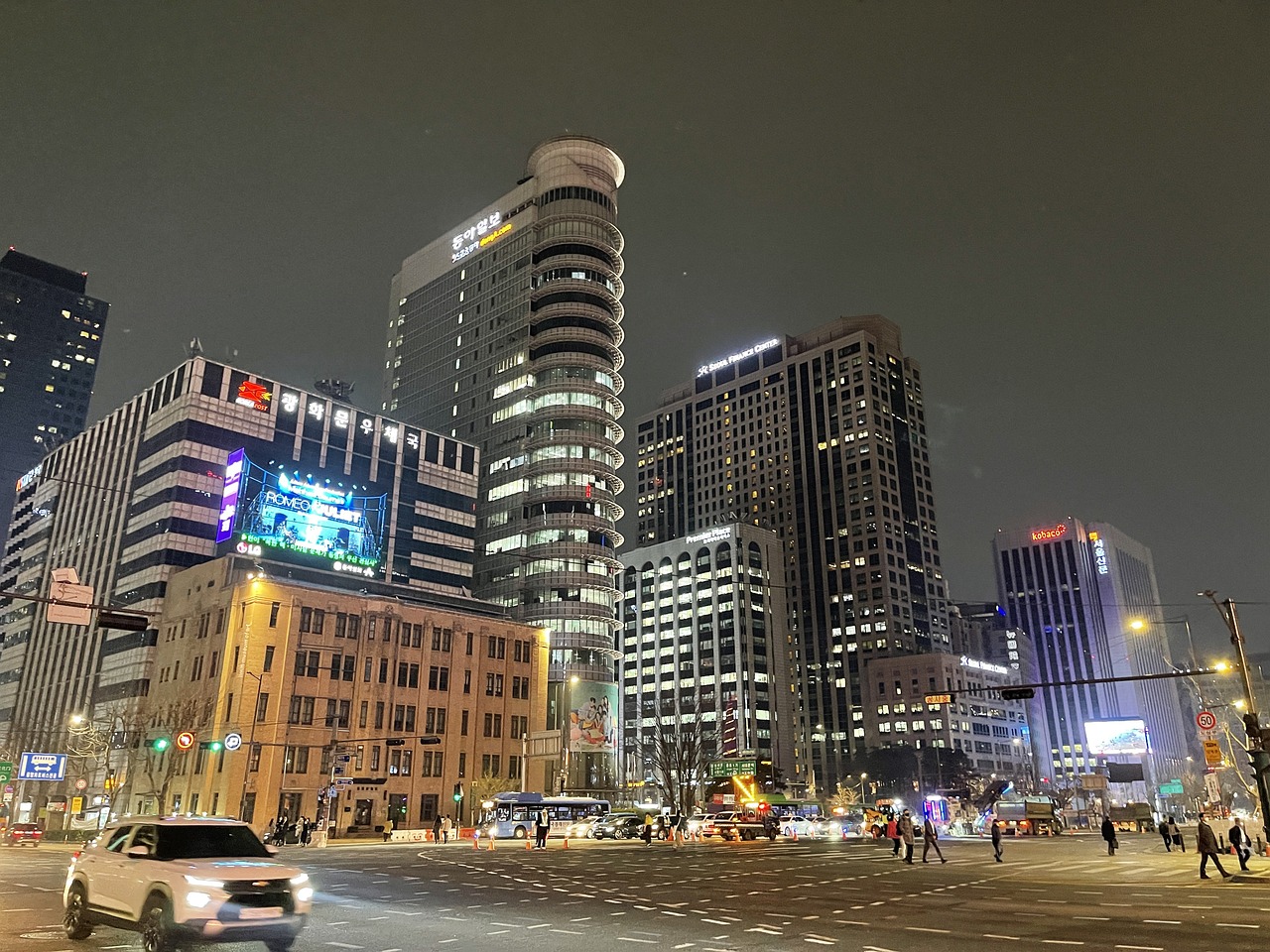
The Concept of Intersectionality
Intersectionality is a groundbreaking concept that has transformed the way we understand social identities and their interplay in shaping experiences of both oppression and privilege. Coined by legal scholar Kimberlé Crenshaw in the late 1980s, intersectionality highlights that individuals do not experience oppression or privilege in isolation; rather, they navigate a complex web of identities, including race, gender, sexuality, class, and ability. This multifaceted approach allows us to grasp the nuances of social justice and the diverse realities faced by marginalized communities.
At its core, intersectionality emphasizes that traditional frameworks of analysis often fall short. For instance, if we only consider race without accounting for gender, we risk overlooking how Black women experience discrimination differently than Black men or white women. This is crucial because it challenges the idea that one aspect of identity can be prioritized over others. In essence, intersectionality invites us to think about how various forms of inequality interconnect, creating unique barriers for different groups.
To illustrate the significance of intersectionality, consider the following example: Imagine a Black transgender woman navigating public spaces. Her experiences of discrimination are not solely based on her race or gender identity but are a product of the intersection of both. This understanding pushes us to recognize that the fight for justice must be inclusive, addressing the specific needs and challenges faced by individuals at these intersections.
Moreover, the relevance of intersectionality extends beyond academia into the realm of political philosophy. It serves as a critical lens through which we can analyze policies, movements, and societal norms. By applying an intersectional perspective, we can better understand how laws and regulations might disproportionately affect certain groups. For example, policies around healthcare access may not consider how socioeconomic status and race intersect, leading to inequities in health outcomes.
In summary, intersectionality is not just a theoretical concept; it is a vital tool for understanding the complexities of social injustices. By recognizing the interplay of various identities, we can foster a more comprehensive approach to political discourse and social justice. As we continue to explore this concept, it becomes evident that embracing intersectionality is essential for creating an equitable society where all voices are heard and valued.

Historical Context of Marginalized Voices
The historical context of marginalized voices in political philosophy is a rich tapestry woven from countless threads of struggle, resilience, and advocacy. To truly grasp the significance of intersectional politics, we must take a step back and examine the various movements and thinkers that have contributed to this discourse over the years. Understanding how marginalized communities have fought for their voices to be heard is essential in appreciating the evolution of political thought.
From the suffragette movement in the early 20th century to the civil rights movement of the 1960s, marginalized voices have continually sought recognition and representation in political philosophy. These movements were not isolated; they were interconnected, often overlapping in their goals and ideologies. For instance, the fight for women's rights was closely tied to racial justice, as many women of color faced dual layers of oppression. This intersectionality has been pivotal in shaping modern political discourse.
Key historical moments that stand out include:
- The Seneca Falls Convention of 1848, where the groundwork for women's suffrage was laid.
- The Civil Rights Act of 1964, which aimed to eliminate discrimination based on race, color, religion, sex, or national origin.
- The Stonewall Riots of 1969, which marked a significant turning point in the fight for LGBTQ+ rights.
These pivotal events highlight the collective struggles of various marginalized groups. Thinkers such as Sojourner Truth, whose famous "Ain't I a Woman?" speech challenged the prevailing notions of race and gender, and bell hooks, who critiqued the intersections of race, class, and gender in her works, have paved the way for contemporary discussions on intersectionality. Their contributions remind us that the fight for equality is not merely about one identity but about the interplay of multiple identities.
Moreover, the historical context of marginalized voices is not just about past struggles; it also informs present-day political movements. The Black Lives Matter movement, for example, draws heavily on the lessons learned from earlier civil rights battles. It emphasizes the importance of centering the experiences of those at the intersections of race, gender, and class in its activism. This continuity shows that the fight for justice is ongoing and ever-evolving.
In summary, the historical context of marginalized voices in political philosophy is a testament to the power of collective action and the necessity of intersectional thinking. By acknowledging the contributions of various movements and thinkers, we can better understand the complexities of political discourse today. The journey toward inclusivity and representation is far from over, but the groundwork laid by those who came before us serves as a guiding light for future endeavors.

Key Thinkers in Intersectional Politics
When we dive into the realm of intersectional politics, it’s impossible to overlook the profound contributions made by several key thinkers. These intellectuals have not only shaped the discourse surrounding intersectionality but have also illuminated the complexities of marginalized identities within political philosophy. Their works serve as a bridge connecting various social identities, helping us to understand how different forms of oppression interact and overlap.
One of the most prominent figures in this field is Kimberlé Crenshaw, who is credited with coining the term "intersectionality" in the late 1980s. Her groundbreaking work has been pivotal in highlighting how race, gender, and class intersect to create unique experiences of discrimination. In her influential essay “Mapping the Margins,” Crenshaw discusses how traditional feminist and anti-racist discourses often fail to address the specific needs and challenges faced by women of color. This critical insight forces us to rethink the frameworks we use to understand oppression and privilege.
Another significant thinker is bell hooks, whose writings have profoundly influenced feminist theory and cultural criticism. hooks emphasizes the importance of love and community in the struggle for social justice, arguing that true liberation cannot occur without addressing the interconnectedness of various forms of oppression. Her work encourages us to view intersectionality not just as a theoretical framework but as a call to action that requires us to engage with the realities of marginalized lives actively.
Additionally, we cannot forget the contributions of Patricia Hill Collins, whose work on the concept of the “matrix of domination” provides a comprehensive framework for understanding how different systems of power operate simultaneously. Collins argues that race, class, gender, and sexuality are interconnected, creating a complex web of oppression that affects individuals differently based on their unique social locations. Her perspective is crucial for anyone looking to grasp the nuances of intersectional politics.
Moreover, the influence of Angela Davis cannot be understated. Davis's activism and scholarship intersect with issues of race, gender, and the prison-industrial complex, challenging us to consider how these elements interact within political discourse. Her work encourages a critical examination of state power and the ways in which marginalized communities are often disproportionately affected by systemic injustices.
To summarize, the contributions of these thinkers have laid the groundwork for a richer understanding of intersectional politics. They remind us that the fight for social justice is not a monolithic struggle but rather a tapestry woven from the diverse experiences of individuals. Each of these scholars brings a unique perspective that enhances our comprehension of how different identities intersect, creating a more nuanced view of political philosophy.
As we explore their ideas, it's essential to remember that the journey of understanding intersectionality is ongoing. It challenges us to continually reflect on our own identities and the privileges we may hold, urging us to listen to and amplify the voices of those who have historically been silenced. This process of engagement is vital for fostering a more inclusive political landscape that genuinely represents the myriad experiences of all individuals.
- What is intersectionality? Intersectionality is a framework that examines how various social identities, such as race, gender, and class, intersect to create unique experiences of oppression and privilege.
- Who coined the term "intersectionality"? The term "intersectionality" was coined by Kimberlé Crenshaw in the late 1980s.
- Why is intersectionality important in political discourse? Intersectionality is crucial because it helps to uncover the complexities of marginalized identities and the ways in which various forms of oppression interact, leading to a more comprehensive understanding of social justice.
- How can I engage with intersectional politics? Engaging with intersectional politics involves actively listening to marginalized voices, reflecting on your own identity, and advocating for policies that consider the diverse experiences of all individuals.

Feminist Contributions
Feminist theorists have been at the forefront of developing the concept of intersectionality, a term coined by Kimberlé Crenshaw in the late 1980s. Their work has profoundly influenced political philosophy by emphasizing that women's experiences cannot be understood in isolation from other social identities such as race, class, and sexuality. This recognition has led to a richer understanding of how different forms of oppression overlap and interact, ultimately shaping the lives of marginalized individuals.
At the heart of feminist contributions to intersectional politics is the idea that traditional political frameworks often fail to account for the complexities of lived experiences. For instance, a white woman may experience gender discrimination, but her experiences are vastly different from those of a Black woman or a Latina woman who face both gender and racial discrimination. This nuanced understanding is crucial for creating policies that genuinely address the needs of all women, rather than just a select few.
Feminist scholars like bell hooks and Angela Davis have highlighted how race and class intersect with gender, advocating for a more inclusive approach to feminism. Their works challenge the notion that feminism is a monolithic movement, instead presenting it as a diverse coalition of voices that must be heard. For example, hooks emphasizes the importance of community and solidarity, arguing that true liberation for women can only be achieved when all marginalized groups unite against oppression.
Moreover, feminist contributions extend beyond theoretical frameworks; they have practical implications for activism and policy-making. Feminists advocate for inclusive practices that ensure marginalized voices are not just represented but are actively involved in shaping the discourse. This is evident in movements like Black Lives Matter, which integrates feminist principles by addressing the specific struggles faced by Black women and other women of color.
In summary, the contributions of feminist theorists to intersectional politics have been instrumental in reshaping political philosophy. By highlighting the interconnectedness of various forms of oppression, they have paved the way for a more holistic understanding of social justice. Their work reminds us that to achieve true equality, we must listen to and amplify the voices of all marginalized groups, ensuring that no one is left behind.
- What is intersectionality? Intersectionality is a framework for understanding how various social identities, such as race, gender, and class, intersect to create unique experiences of oppression and privilege.
- Who coined the term intersectionality? The term was coined by legal scholar Kimberlé Crenshaw in 1989.
- Why is intersectionality important in feminist theory? It highlights the diverse experiences of women and emphasizes that feminism must address multiple forms of discrimination to be truly inclusive.
- How can intersectional politics impact policy-making? By considering the needs of all marginalized groups, policies can be designed to address the specific challenges faced by these communities, leading to more equitable outcomes.
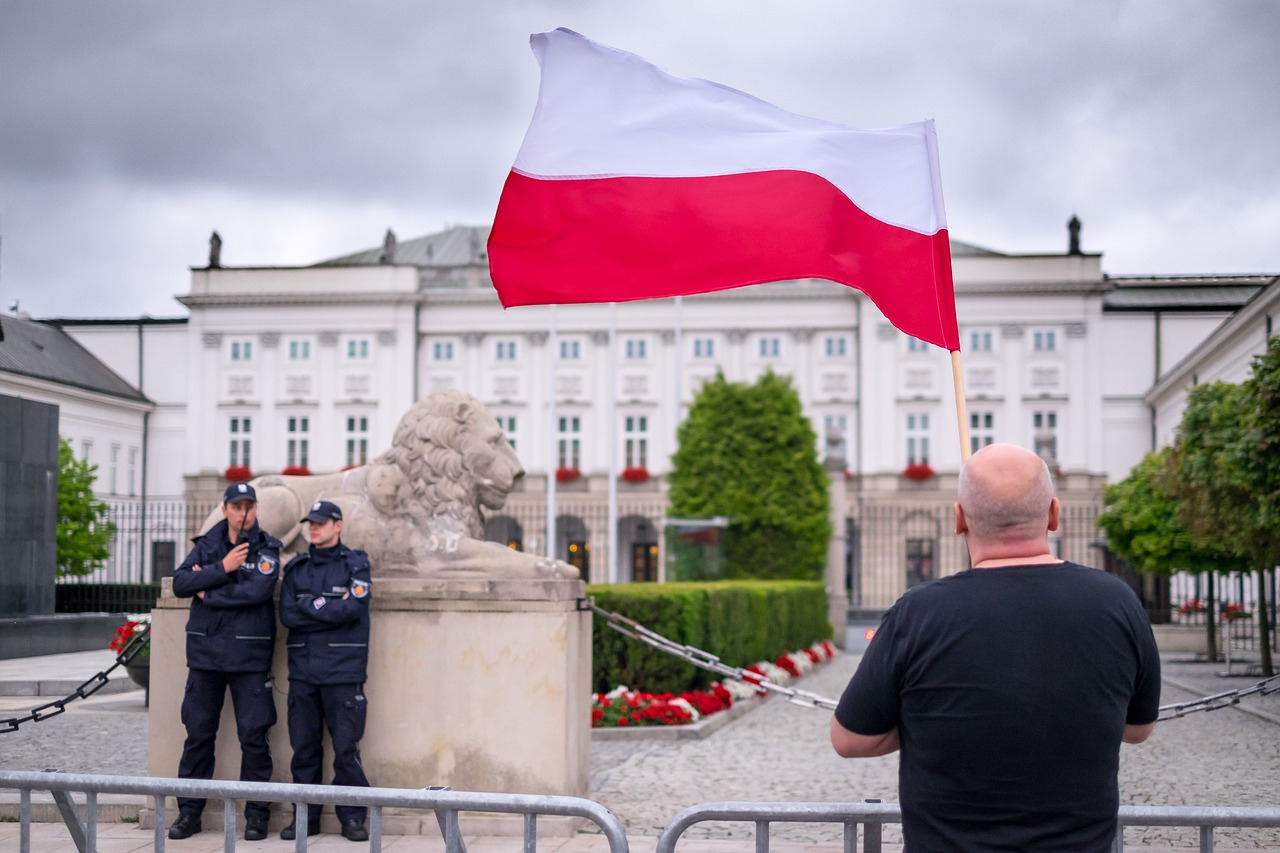
Critical Race Theory
Critical Race Theory (CRT) has emerged as a powerful framework within the realm of intersectional politics, offering profound insights into the intricate relationship between race, identity, and power dynamics. At its core, CRT challenges the traditional narratives that dominate political philosophy, emphasizing that racism is not merely an individual prejudice but a systemic issue deeply embedded in societal structures. This perspective allows us to understand how laws, policies, and institutional practices perpetuate racial inequalities, often in ways that are subtle yet pervasive.
Originating in the late 1970s and early 1980s, CRT was developed by a group of legal scholars who sought to address the limitations of conventional civil rights approaches. Pioneers like Derrick Bell, Kimberlé Crenshaw, and Richard Delgado were instrumental in shaping this discourse. They argued that the law is not neutral; rather, it often reflects and reinforces the interests of those in power. For instance, Kimberlé Crenshaw introduced the concept of intersectionality within CRT, highlighting how race intersects with other identities such as gender, class, and sexuality, leading to unique experiences of oppression.
One of the critical contributions of CRT is its focus on the lived experiences of marginalized communities. By centering the voices of those who have been historically silenced, CRT provides a platform for understanding the complexities of racial identity and the multifaceted nature of discrimination. This approach encourages us to listen to personal narratives, which can reveal the often-overlooked realities of systemic racism. For example, the experiences of a Black woman cannot be fully understood through the lens of race alone; they must also consider how her gender and class intersect with her racial identity.
Moreover, CRT critiques the idea of colorblindness, which suggests that ignoring race will lead to equality. Instead, CRT advocates for a recognition of race as a critical factor in understanding social justice. It posits that acknowledging and addressing the realities of racism is essential for creating equitable policies and practices. This understanding is crucial in contemporary political discourse, where issues of racial justice are at the forefront of social movements.
The implications of CRT extend beyond academia; they have influenced various fields, including education, sociology, and public policy. For instance, in education, CRT has prompted educators to rethink curricula and teaching methods to better reflect the diverse histories and experiences of students. It challenges educators to create inclusive environments that recognize and validate the identities of all students, particularly those from marginalized backgrounds.
In conclusion, Critical Race Theory serves as a vital lens through which we can examine the complexities of race and power in political philosophy. By illuminating the systemic nature of racism and advocating for the inclusion of diverse voices, CRT enriches our understanding of intersectional politics and its profound implications for social justice.

Contemporary Implications
In today's rapidly evolving political landscape, the principles of intersectional politics have profound implications that resonate through various social movements and policy-making efforts. As we navigate these complexities, it's crucial to recognize how intersectionality informs our understanding of power dynamics and social justice. By acknowledging that individuals experience multiple, overlapping identities—such as race, gender, sexuality, and class—we can better grasp the nuances of oppression and privilege in contemporary society. This awareness not only enriches political discourse but also fosters a more inclusive environment where marginalized voices can be heard and valued.
One of the most significant impacts of intersectional politics is its ability to shape current social movements. For instance, movements like Black Lives Matter and Me Too have harnessed intersectionality to highlight the interconnected struggles faced by individuals at the margins of society. These movements emphasize that issues of race, gender, and sexual orientation cannot be viewed in isolation; rather, they are intertwined and must be addressed holistically. This comprehensive approach has led to a broader understanding of justice, advocating for policies that consider the diverse experiences of all individuals.
Furthermore, intersectionality has influenced policy-making by urging lawmakers to consider the multifaceted nature of identity. For example, when drafting legislation on healthcare, policymakers are now more likely to consider how different groups—such as women of color or LGBTQ+ individuals—may face unique barriers to access. This shift is crucial in creating equitable policies that genuinely address the needs of all citizens. In this way, intersectional politics serves as a guiding framework for developing policies that are not only fair but also just.
However, the journey towards fully realizing the implications of intersectional politics is fraught with challenges. As we strive for a more inclusive political dialogue, it is essential to recognize and dismantle the systemic barriers that continue to marginalize certain voices. This requires a commitment to active listening and a willingness to engage with perspectives that may differ from our own. By fostering an environment where diverse voices are not just heard but actively included, we can work towards a political landscape that reflects the rich tapestry of society.
In conclusion, the contemporary implications of intersectional politics are vast and multifaceted. They not only shape social movements and influence policy-making but also challenge us to rethink our approaches to political discourse. As we move forward, embracing these principles will be vital in creating a more equitable and just society, where every voice has the opportunity to contribute to the conversation.
- What is intersectionality? Intersectionality is a framework for understanding how various social identities intersect and contribute to unique experiences of oppression and privilege.
- Why is intersectional politics important? It helps to highlight the complexities of social justice issues, ensuring that diverse perspectives are included in political discussions and policy-making.
- How can I contribute to intersectional politics? You can engage by educating yourself on different social identities, actively listening to marginalized voices, and advocating for inclusive policies in your community.

Challenges to Intersectional Politics
While intersectional politics offers a powerful framework for understanding the complexities of identity and oppression, it is not without its challenges. One of the most significant hurdles is the misinterpretation of intersectionality. Many people tend to oversimplify the concept, viewing it merely as a checklist of identities rather than a nuanced analysis of how these identities interact and affect individuals' experiences. When intersectionality is reduced to a simple formula, it loses its potency and the ability to address the real issues faced by marginalized communities.
Moreover, there is a tendency to prioritize certain identities over others, leading to a hierarchy of oppression that can alienate individuals who do not fit neatly into these categories. This is often seen in political discourse where the voices of some marginalized groups are amplified while others remain silent. For example, discussions around race might overshadow issues faced by LGBTQ+ individuals or those with disabilities, creating a fragmented narrative that fails to capture the full spectrum of experiences. Such dynamics can lead to a sense of competition among marginalized groups rather than fostering solidarity and understanding.
Another significant challenge is the institutional resistance to incorporating intersectional perspectives into mainstream political discussions. Many political institutions and organizations are deeply entrenched in traditional frameworks that prioritize singular identities or issues. This resistance can manifest in various ways, from the lack of representation in leadership roles to the absence of intersectional analysis in policy-making processes. When decision-makers are not equipped with an understanding of intersectionality, the policies they create often fail to address the needs of the most vulnerable communities.
To illustrate these challenges, consider the following table that outlines common criticisms of intersectional politics alongside potential solutions:
| Criticism | Potential Solution |
|---|---|
| Oversimplification of identities | Promote education and awareness about the complexities of identity |
| Hierarchical prioritization of issues | Encourage inclusive dialogues that elevate diverse voices |
| Institutional resistance | Advocate for policy reforms that incorporate intersectional frameworks |
| Misunderstanding of intersectionality | Provide clear definitions and examples in educational settings |
Despite these challenges, there are strategies that can be employed to enhance the effectiveness of intersectional politics. One crucial approach is to foster an environment of active listening and genuine engagement with marginalized voices. This means not only hearing but truly understanding the experiences and needs of diverse groups. By prioritizing representation in political discussions, we can create a more equitable landscape where all voices are valued and heard.
In conclusion, while intersectional politics faces significant challenges, it remains a vital tool for understanding and addressing the complexities of social justice. By acknowledging and working through these obstacles, we can strengthen the framework of intersectionality and ensure that it serves as a powerful ally in the fight for equity and inclusion.
- What is intersectionality? Intersectionality is a framework that examines how various social identities, such as race, gender, and class, intersect to create unique experiences of oppression and privilege.
- Why is intersectional politics important? It is crucial for understanding the complexities of marginalized experiences and for creating policies that address the needs of all individuals, especially those who face multiple layers of discrimination.
- What are some common misconceptions about intersectionality? Many people mistakenly believe that intersectionality is just a checklist of identities, rather than a comprehensive analysis of how these identities interact and shape experiences.
- How can we improve the inclusion of marginalized voices in politics? By promoting active listening, encouraging representation, and fostering inclusive dialogues that elevate diverse perspectives.

Misinterpretations of Intersectionality
When discussing intersectionality, it's essential to recognize that many interpretations can lead to misunderstandings. Often, people reduce this complex concept to a mere checklist of identities—like race, gender, and class—without appreciating the intricate ways these identities interact to shape individual experiences. This oversimplification can dilute the power of intersectionality and hinder meaningful discussions about social justice and equity.
One common misinterpretation is the idea that intersectionality only applies to specific groups. Some might believe it's solely a framework for understanding the experiences of women of color or LGBTQ+ individuals. However, intersectionality is much broader; it encompasses anyone whose identities intersect in ways that create unique experiences of oppression or privilege. For instance, a white woman may experience gender-based discrimination, but her race may afford her certain privileges that a woman of color does not enjoy. Thus, failing to recognize the universality of intersectionality can lead to a fragmented understanding of social issues.
Additionally, there is a tendency to view intersectionality as a competition among marginalized groups. This perspective fosters a harmful narrative that pits one group against another, suggesting that only one identity can be prioritized at a time. In reality, intersectionality advocates for a holistic approach, emphasizing that multiple identities coexist and influence each other. By embracing this interconnectedness, we can work toward a more inclusive political landscape that recognizes the complexities of individual experiences.
Another significant misinterpretation is the belief that intersectionality is merely an academic concept, confined to the walls of universities and think tanks. While it is rooted in academic discourse, its implications extend far beyond academia. Intersectionality can inform policy-making, community organizing, and everyday interactions. It encourages individuals and organizations to consider how various identities impact experiences and outcomes, fostering a more empathetic and inclusive society.
To address these misinterpretations, it's crucial to engage in open dialogues about intersectionality. Education plays a vital role in clarifying its meaning and significance. Workshops, community discussions, and accessible resources can help demystify the concept and promote a deeper understanding of how intersectionality operates in real-world contexts. By actively listening to marginalized voices and acknowledging the nuances of their experiences, we can collectively dismantle the misconceptions surrounding intersectionality.
In conclusion, misinterpretations of intersectionality not only undermine its potential but also hinder progress toward social justice. By broadening our understanding and fostering inclusive conversations, we can ensure that intersectionality serves as a powerful tool for advocacy and change. As we navigate the complexities of identity and oppression, let’s remember that the goal is not to create divisions but to build bridges that connect us all in the pursuit of equity and justice.
- What is intersectionality? Intersectionality is a framework that examines how various social identities, such as race, gender, and class, intersect to create unique experiences of oppression and privilege.
- Why is intersectionality important in political philosophy? It helps to highlight the diverse experiences of marginalized groups, ensuring that their voices are included in political discourse and policy-making.
- How can we address misinterpretations of intersectionality? Engaging in open dialogues, providing education, and promoting inclusive discussions can help clarify its meaning and significance.
- Is intersectionality only relevant to certain groups? No, intersectionality applies to anyone whose identities intersect in ways that create unique experiences of oppression or privilege.

Strategies for Inclusion
In the intricate tapestry of political discourse, ensuring that marginalized voices are not only heard but also valued is paramount. To achieve this, we must adopt that actively engage diverse perspectives. First and foremost, it's essential to create spaces where these voices can thrive. This involves not only inviting marginalized individuals to the table but also fostering an environment where they feel safe to express their thoughts and experiences without fear of judgment. Imagine a vibrant marketplace of ideas where every stall represents a different perspective—this is what we strive for in political discussions.
Moreover, representation matters. It's crucial to have individuals from various backgrounds in positions of power. When decision-makers reflect the diversity of the population, policies are more likely to address the needs of all communities. This can be achieved through intentional recruitment strategies that prioritize diversity in political organizations, think tanks, and governmental bodies. For instance, organizations can implement mentorship programs aimed at empowering underrepresented groups to step into leadership roles.
Active listening is another critical component of fostering inclusion. It’s not enough to hear what marginalized voices are saying; we must actively engage with their narratives. This means moving beyond tokenistic gestures and genuinely considering their input in policy-making processes. For example, when drafting legislation that affects a specific community, lawmakers should hold forums or discussions that allow community members to share their insights and experiences. This two-way dialogue can illuminate issues that might otherwise be overlooked.
Furthermore, educational initiatives can play a significant role in promoting inclusion. By integrating intersectional studies into educational curricula, we can cultivate a generation of thinkers who understand the complexities of identity and power dynamics. This knowledge equips future leaders with the tools to recognize and challenge systemic inequalities. Schools, universities, and community organizations can collaborate to create workshops and training sessions that focus on intersectionality and its implications in various fields.
Lastly, it’s vital to challenge existing narratives that dominate political discourse. This can be accomplished through media representation and storytelling. By amplifying the stories of marginalized individuals, we can shift public perception and highlight the richness of diverse experiences. Social media platforms, documentaries, and art can serve as powerful tools in this regard. They can help dismantle stereotypes and foster empathy among broader audiences, ultimately leading to a more inclusive political landscape.
In summary, the strategies for inclusion in political discourse are multifaceted and require a concerted effort from all stakeholders. By creating safe spaces, ensuring representation, practicing active listening, implementing educational initiatives, and challenging dominant narratives, we can pave the way for a more equitable political environment. After all, when everyone’s voice is included, the conversation becomes richer, more nuanced, and ultimately more effective in addressing the issues that affect us all.
- What is intersectionality? Intersectionality is a framework for understanding how various social identities overlap and intersect, creating unique experiences of oppression and privilege.
- Why is inclusion important in political discourse? Inclusion ensures that diverse perspectives are considered, leading to more comprehensive and effective policies that address the needs of all communities.
- How can I promote inclusion in my community? You can promote inclusion by advocating for diverse representation in local organizations, participating in community discussions, and amplifying marginalized voices through social media and other platforms.
Frequently Asked Questions
- What is intersectionality?
Intersectionality is a concept that explores how different social identities, such as race, gender, class, and sexuality, intersect and interact to shape individual experiences of oppression and privilege. It highlights that people face multiple, overlapping forms of discrimination, which cannot be understood in isolation.
- Why is intersectionality important in political philosophy?
Intersectionality is crucial in political philosophy because it allows for a more comprehensive understanding of marginalized voices. By recognizing the complexities of identity, it challenges traditional political theories that often overlook the experiences of those at the intersections of various social categories.
- Who are some key thinkers in intersectional politics?
Some influential thinkers in intersectional politics include Kimberlé Crenshaw, who coined the term "intersectionality," as well as bell hooks and Patricia Hill Collins, who have contributed significantly to feminist theory and critical race theory, respectively. Their works emphasize the need to consider multiple identities in political discourse.
- How have feminist theorists contributed to intersectionality?
Feminist theorists have been pivotal in developing intersectionality by highlighting how gender interacts with other identities, such as race and class. They challenge traditional political thought, advocating for the inclusion of diverse voices and experiences in discussions about power and justice.
- What role does critical race theory play in intersectional politics?
Critical race theory examines the ways in which race and racism intersect with other forms of identity and social structures. It addresses the complexities of race, identity, and power dynamics, making it an essential component of intersectional politics, particularly in understanding systemic inequalities.
- What are the contemporary implications of intersectional politics?
The implications of intersectional politics are vast, influencing current political movements, policy-making, and social justice initiatives. It encourages a more inclusive approach to activism, ensuring that the voices of marginalized groups are heard and considered in the political arena.
- What challenges does intersectional politics face?
Intersectional politics faces several challenges, including misinterpretations of the concept, which can dilute its effectiveness. Additionally, there are criticisms regarding its application in political discourse, often stemming from a lack of understanding of its foundational principles.
- How can we address misinterpretations of intersectionality?
To address misinterpretations, it's essential to clarify the true meaning and scope of intersectionality. This involves educating individuals about its foundational concepts and demonstrating how it can be effectively applied in political discussions to foster a deeper understanding of social justice.
- What strategies can be employed to ensure inclusion of marginalized voices?
Strategies to ensure the inclusion of marginalized voices include promoting representation in political discussions, actively listening to diverse perspectives, and creating platforms for underrepresented groups to share their experiences. This helps to foster a more equitable political landscape.





